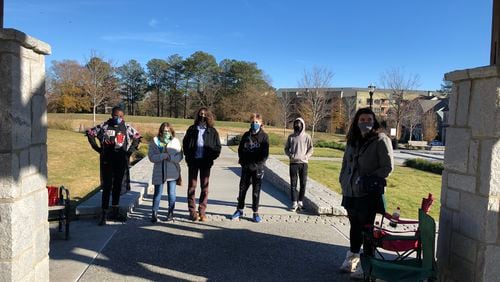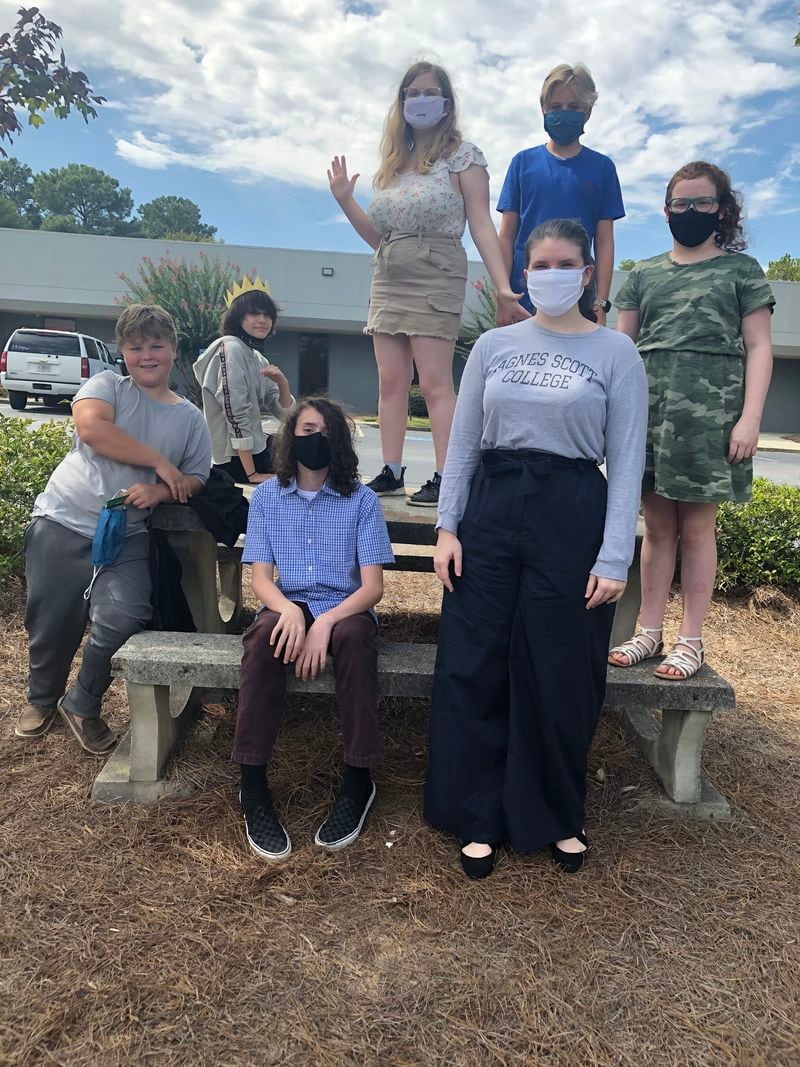In the early days of virtual schooling, I was forced to take a trip back in time to fifth grade math.
My daughter needed help with computing fractions, and after an intensive online review, I was able to explain the operations in a way she could understand. I was giving myself a pat on the back for a parenting job well-done when she dropped a bomb.
“Momma, what if I was home-schooled?” she said.
“WHAAAT?” I said, my face frozen into a shock emoji stare.
I am not opposed to home schooling conceptually, but as a single working parent, home schooling — REAL home schooling — was so far beyond my purview that I couldn’t formulate an actual reply.
It turned out that was a short-lived desire on her part and she is happily anticipating middle school at the charter school she has attended since kindergarten, but in retrospect, I shouldn’t have been surprised at her inquiry.
At the start of the 2020-2021 school year, the number of U.S. households that were home-schooling doubled compared to the previous year, according to the U.S. Census Bureau’s experimental Household Pulse Survey, the first source to offer national and state-level data about the impact of COVID-19 on home schooling rates.
This past school year, 11% of U.S. households engaged in home schooling, which the survey made a point of distinguishing from virtual learning through a public or private school.
Home schooling rates increased across all races and ethnicities, though the jump was greatest among Black households, for which the proportion of home schooling increased five times. Georgia was among the 28 states where home schooling increased by statistically significant proportions from 7.1% of households in spring 2020 to 16% by fall 2020 as families sought alternatives to meet health and childcare needs of their families along with learning needs of children.
Alternative school arrangements in general gained wide appeal during the COVID-19 pandemic as most classrooms transitioned to virtual models. In addition to home schooling, those alternatives have included everything from the widely debated pandemic pods (students gathering privately for in-person learning) to interest in private schools and stand-alone virtual schools.
These efforts have most often been reported as parent-led solutions. What I hadn’t heard about as much were students who wanted to transition to home schooling.
As early as the second grade, Lauren Pelissier’s 12-year-old son began asking if he could be home-schooled. He is a good student and a traditional learner but “he has never really liked school,” said Pelissier of Decatur.
She and her husband, firm believers in supporting the local schools that use their tax dollars, concluded that their kid just wasn’t going to love school, but with the transition to virtual learning during the pandemic, Pelissier said she watched her son crumble.
He was doing well and completing his assignments, but they all knew something was wrong. She started looking into home schooling.
“If my only choice was to stay at home and teach him his ABCs and 123s, I would have done it, but there was no version of that that would work for us,” she said. Then she found the Academy, a hybrid school for junior high and high school home-schooled students.
Home schooling parent Amy Sharony founded the school in 2016 with Suzanne Rezelman so that Sharony’s daughter would be able to take classes with other students. Under the hybrid model, students attend classes together in-person twice a week and work independently three days a week. Lessons are led by teachers on in-person days who also assist students in self-directed work at home.
Sharony’s daughter, who graduated from high school last year, ended up opting out and sticking with traditional home schooling, but Sharony continued the hybrid model with her son and other families. There are now 12 students in junior high and 10 in high school, she said. In the coming year, junior high enrollment will reach 18 students.
Last summer, Sharony said she received hundreds of emails from parents across the country asking about home schooling. They described watching their kids work 12 to 14 hours on virtual lessons. Some were frustrated at being in charge of online education without having power over content and instruction. Most parents just wanted their kids to go somewhere every day, and Sharony had to break it to them that’s just not what the Academy is about.
“The Academy is a place to get the benefits of home schooling without having to be the bad guy for their kids,” she said. Parents have a range of fears when considering home schooling, including fear that they aren’t smart enough or that their child won’t be socialized. Some worry that home schooling is seen as a conservative, religious movement even though progressive, secular home schooling is on the rise, Sharony said.
One of the biggest reasons for the uptick in interest in home schooling is the flexibility to meet children where they are and offer the kind of personalized learning that has become a hot topic in discussions about post-pandemic education.
Pelissier said she watched her son blossom at the Academy. He became more outgoing and talkative in school and in public. He had confidence in expressing himself. “I realized that … he can be happy at school but the format we were dealing with for all of these years just wasn’t for him,” she said. “I would have never realized that if I had kept him in a traditional setting.”
As traditional schools began to reopen for in-person learning, her son begged to stay at the Academy. Though Pelissier had initially assumed he would return to his traditional public school or eventually end up in private school, she and her husband have decided to allow him to stay.
The pandemic has taught us so many things, but for those of us who were at home and overseeing our children’s schooling, it brought the chance to watch our children learn. Even if an alternative school arrangement is not a possibility or a desire, we can use the awareness we’ve gained to advocate for our children in any school setting in ways that we may not have before.
Read more on the Real Life blog (www.ajc.com/opinion/real-life-blog/) and find Nedra on Facebook (www.facebook.com/AJCRealLifeColumn) and Twitter (@nrhoneajc) or email her at nedra.rhone@ajc.com
About the Author








